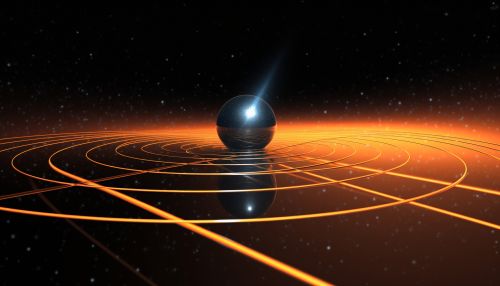Heisenberg Uncertainty Principle
Introduction
The Heisenberg Uncertainty Principle is a fundamental concept in Quantum Mechanics, a branch of physics that deals with phenomena on a very small scale, such as molecules, atoms, and subatomic particles like electrons and photons. This principle, formulated by German physicist Werner Heisenberg in 1927, states that it is impossible to simultaneously measure the exact position and momentum (the product of mass and velocity) of a particle with absolute precision. The more precisely one quantity is measured, the less precisely the other can be known. This is not a statement about the limitations of a researcher's ability to measure particular quantities of a system, but rather about the nature of the system itself.


Historical Background
The Heisenberg Uncertainty Principle emerged from the matrix mechanics interpretation of quantum mechanics, which was the first consistent formulation of quantum mechanics. Heisenberg, along with physicists Max Born and Pascual Jordan, developed matrix mechanics before the wave mechanics interpretation was formulated. The principle is inherently linked to the observer effect, a theory that states that the act of observing will influence the phenomenon being observed.
Mathematical Formulation
The Heisenberg Uncertainty Principle can be mathematically expressed using the language of Quantum Physics. The most common way to express the principle is in terms of standard deviations of position (Δx) and momentum (Δp):
Δx * Δp ≥ ℏ/2
Where ℏ is the reduced Planck's constant, equal to the Planck's constant (h) divided by 2π. This inequality means that the product of the uncertainties in position and momentum is always greater than or equal to half of the reduced Planck's constant.


Implications
The Heisenberg Uncertainty Principle has profound implications for our understanding of the universe. It implies that there is a fundamental limit to what we can know about the behavior of quantum particles and, therefore, the smallest scales of nature. In other words, the world at the quantum level is somewhat blurred and lacks the deterministic certainty that characterizes the macroscopic world of everyday life.
This principle also leads to the concept of quantum superposition, where a quantum system such as an atom or photon can exist in multiple states corresponding to different outcomes simultaneously, as opposed to having one definite state.
Experimental Verification
The Heisenberg Uncertainty Principle has been experimentally verified. One of the most famous experiments that confirm this principle is the double-slit experiment. When particles such as electrons are fired one at a time through a barrier with two slits, an interference pattern emerges on the screen behind the barrier, indicating that each particle went through both slits simultaneously, a phenomenon that can only be explained by quantum mechanics and the uncertainty principle.


Applications
Despite its abstract nature, the Heisenberg Uncertainty Principle has practical applications. For example, it plays a crucial role in the operation of Quantum Computers, devices that use quantum bits, or qubits, to perform computations. The principle is also used in scanning tunneling microscopes, which allow scientists to image surfaces at the atomic level.
Criticisms and Interpretations
Like many aspects of quantum mechanics, the Heisenberg Uncertainty Principle has been subject to various interpretations and criticisms. Some physicists argue that the principle is a statistical artifact related to the measurement process, while others maintain that it reflects a fundamental aspect of reality. Despite these debates, the principle remains a cornerstone of quantum mechanics.


